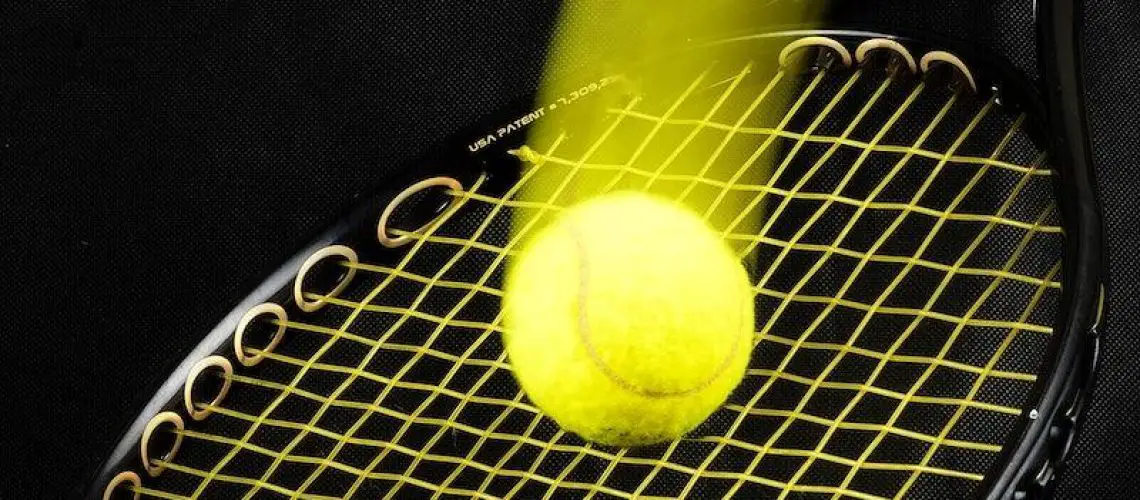We may earn money or products from the companies mentioned in this post.
Brief History of Tennis

Tennis, a sport that has captivated millions around the world, has a rich and fascinating history Its origins can be traced back to Europe, where it first took shape in the 12th century Initially played by monks as a form of recreation, tennis quickly gained popularity among the noble class
Over time, the game evolved and underwent various changes In the 16th century, rackets were introduced, adding a new dimension to the gameplay The sport continued to evolve further with the advent of lawn tennis in the 19th century, which saw the introduction of standardized rules and equipment
Importance of Scoring in Sports

In any sport, scoring plays a crucial role in ensuring fair competition and accurate assessment of performance Whether it’s tennis or any other game, scoring provides a systematic way to determine winners and losers based on their abilities and accomplishments
Fair Competition and Assessment
The scoring system allows players to compete on an equal playing field It ensures that matches are won not just by luck or chance but by skill and strategy By keeping track of points earned or games won, scoring provides an objective measure of success, eliminating biases or personal opinions
Moreover, scoring helps assess players’ performance over time It allows for comparative analysis between different individuals or teams and enables spectators to understand who is performing better during a match or tournament
Keeping Track of Progress
Scoring also serves as a valuable tool for players themselves to monitor their progress and identify areas for improvement By tracking scores over multiple matches or seasons, athletes can gauge their development and set goals accordingly
Additionally, scoring adds excitement and engagement for both players and spectators alike Each point becomes a small victory, and the accumulation of points creates tension and thrill throughout the game
Origins of Tennis Scoring System

When we think of tennis, we often associate it with prestige, elegance, and a scoring system that seems to have its own unique language But have you ever wondered how this scoring system came to be? Let’s dive into the fascinating origins of the tennis scoring system and explore the intriguing connections it has to medieval France
Connection to Medieval France
In order to understand the roots of the tennis scoring system, we need to travel back in time to medieval France It was during this period that a precursor to modern tennis called “jeu de paume” emerged This game was played with bare hands and involved hitting a ball against a wall using various techniques similar to those used in modern tennis
The influence of French culture extends beyond just the game itself The French language has had a significant impact on the terminology used in tennis For instance, terms like “love” (meaning zero) and “deuce” (representing a tie score at 40-40) are derived from French words This connection between medieval France and modern tennis adds an extra layer of historical depth to the sport
Influence of Clocks and Timekeeping
The origins of the unique number-based scoring system in tennis can also be traced back to clocks and timekeeping practices prevalent during earlier eras In early French scoring systems, points were awarded as 15, 30, and 45 (later changed to 40). So how did these numbers come about?
One theory suggests that these numbers may have originated from clock faces or fractions associated with time measurement The use of quarters in early French scoring systems aligns with this idea – each point representing one quarter of a full game or set
1 Use of Quarters in Early French Scoring System
In the early stages of tennis, points were awarded as 15, 30, and 45 The number 45 eventually evolved into its current form of “40” While the reason for this change remains uncertain, it is believed to be a result of simplifying the scoring system
a) Possible Origin from Clock Faces or Fractions
Another theory suggests that the numbers used in scoring may have been inspired by clock faces or fractions associated with timekeeping Just as a clock face is divided into quarters (15-minute intervals), the scoring system may have adopted a similar concept, attributing each point to a specific fraction of a game
2 Alternative Theories on the Number-Based Scoring System
While the connection between clocks and timekeeping provides one possible explanation for the number-based scoring system in tennis, alternative theories also exist Some propose that these numbers may have originated from an ancient French card game known as jeu de carte
Regardless of its exact origins, the tennis scoring system has certainly stood the test of time and continues to captivate players and spectators alike with its unique language and historical connections
Development and Adaptation of the Tennis Scoring System

The evolution of the tennis scoring system is a fascinating journey that spans centuries From its origins in jeu de paume to the modern lawn tennis we know today, this system has undergone gradual changes and adaptations to suit different cultures and countries
Changes over time
In its early days, tennis was played as jeu de paume, a game that closely resembled handball Players would use their bare hands to hit the ball against a wall or over a net As the sport gained popularity and spread across Europe, modifications were made to improve gameplay
Fast forward to the 19th century when Major Walter Clopton Wingfield introduced lawn tennis This new version involved playing on grass courts with rackets instead of bare hands The scoring system also underwent changes during this transition, becoming more structured and organized
Different countries embraced lawn tennis, each adding their own unique touch to the scoring system For example, in British tournaments, “love” is used instead of zero for scoring points In contrast, American tournaments stuck with numerical values for points
Tiebreak introduction and evolution
The introduction of tiebreaks revolutionized how matches are decided when players reach a certain score threshold The tiebreak system was created by James Van Alen in the 1960s as a way to prevent long matches from dragging on indefinitely
Variations of the tiebreak have been used throughout different eras in tennis history Initially, a nine-point tiebreak format was employed where players had to win five points with at least a two-point lead However, this format proved controversial due to its potential for extended play
In response to feedback from players and spectators alike, sudden death tiebreaks were introduced In this format, the first player to reach seven points wins the tiebreak and ultimately the set This modification added an element of excitement and tension to matches, ensuring a clear winner within a shorter timeframe
The development and adaptation of the tennis scoring system highlight how a sport can evolve over time while still retaining its essence From humble beginnings in jeu de paume to the introduction of tiebreaks, these changes have made tennis more engaging and accessible to players and fans around the world
Conclusion
Understanding the origins of tennis scoring is essential for any avid player or fan It provides insight into the rich history and traditions that have shaped the sport we know today By delving into the past, we can gain a deeper appreciation for the evolution of tennis scoring systems
Summary of key points on tennis scoring origins
In ancient times, tennis-like games were played across various cultures using different scoring methods The modern system of “Love,” “15,” “30,” and “40” originated from medieval France and was influenced by the clock face Love symbolizes zero, while 15, 30, and 40 represent quarter-hour intervals on the clock This unique system has stood the test of time and remains an integral part of tennis today
Importance of understanding historical context
By exploring the historical context surrounding tennis scoring, we can appreciate how cultural influences shape sporting practices Understanding why certain traditions developed allows us to fully grasp their significance in present-day competitions It also helps us realize that even small details like scoring systems can carry centuries-old stories within them
Connection between past traditions and today’s modern game
The connection between past traditions and today’s modern game is evident in many aspects beyond just scoring Tennis continues to honor its roots through its rules, etiquette, and even court design By recognizing this link, players can deepen their understanding of the sport’s heritage while embracing its ever-evolving nature
In conclusion, learning about the origins of tennis scoring not only enhances our knowledge but also fosters a stronger connection to the game itself It allows us to appreciate how far we’ve come while acknowledging those who came before us So next time you step onto a tennis court or watch a match unfold, remember the rich history behind every point scored
Useful Links

Points are given in tennis 15-30-40. Why 40?
In tennis, does anybody know why the scoring goes 15 to …
Where did the tennis scoring system come from?
ELI5: where does tennis’ scoring system come from?
What Is The History Of Tennis Scoring? – Things to Know
Deuce in Tennis: Meaning, Origin, When to Use & Most Ever
The Evolution of Tennis Scoring: A Comprehensive Guide
Why Tennis Scoring Is So Weird – YouTube
How to Keep Score in Tennis
Tennis scoring, explained: A guide to understanding the …
History of Tennis Customs: Love
Tennis Scoring System Explained
Where Did Tennis Scoring Come From?
The Possible Origins Of The Tennis Scoring System, Part …
Why ‘Love’ Means “Nothing” in Tennis
This is why the scores in tennis are 15, 30 and 40… …
Why Is Tennis Scored 15 30 40? (With 3 Theorys)
History Of The Tennis Scoring System: Full Explanation
Why do we say love? And other tennis jargon – BBC Bitesize






